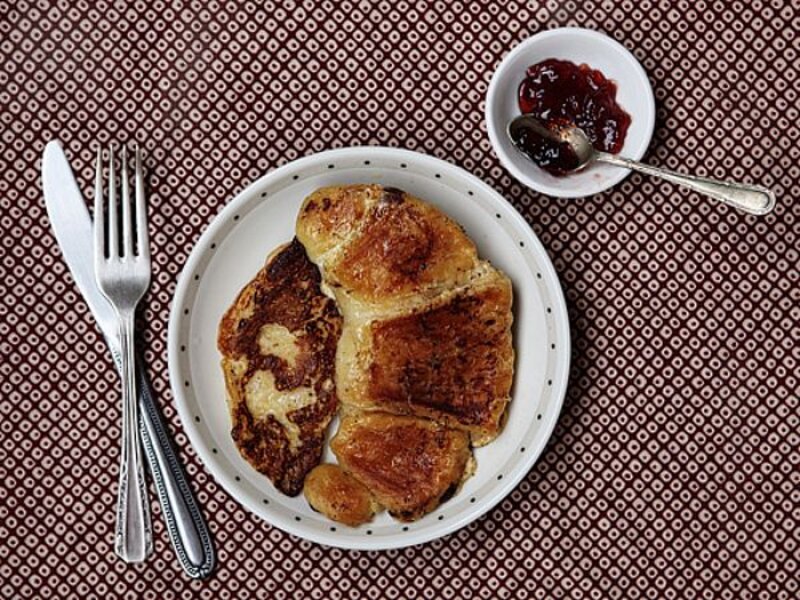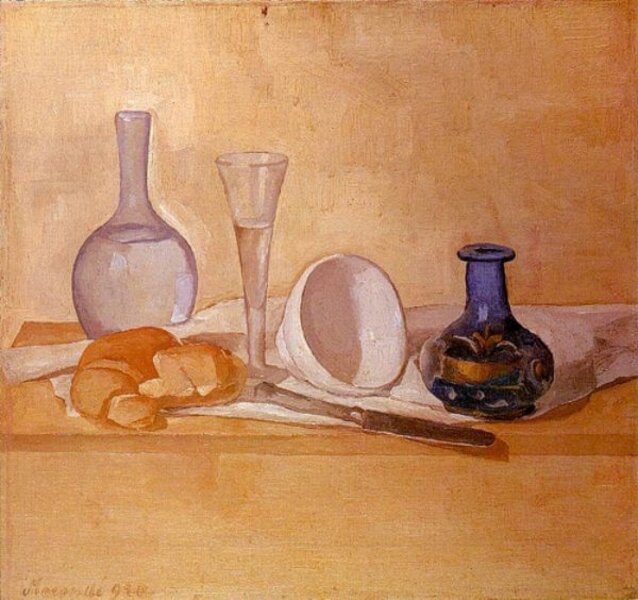Croissant French toast
Loading...
The holidays are a time for decadence. Although I rarely have a croissant hanging around long enough to become stale, in December it is particularly good fortune to find a little pastry hiding in the corner of the bread box. In France, French toast is called pain perdu, or ‘lost bread’ to highlight the way the dish reclaims unfortunate lumps of bread that become too hard to eat. The recipe of a stale bit of bread, dipped in eggy milk and fried, is made especially indulgent through the use of a croissant – crispy on the outside while soft and creamy inside. When served with a small pot of jam or some salty bacon, croissant French toast becomes the centerpiece of a perfect Christmas brunch.
The Italian artist, Giorgio Morandi, was concerned with pure form within the compositions of still life paintings. His work focused on the subtle gradations of tone and hue with a limited color palette. He is best regarded for his paintings of bottles, of which he constructed throughout his career in an array of configurations. Elements of this repeated motif are found in the simple execution of Still Life (The Blue Vase). Morandi’s exhaustive body of work is considered to be an important basis for the Minimalist movement.
Croissant French Toast
serves 4
4 croissants
1 cup milk
3 eggs
2 tablespoons brown sugar
1/2 teaspoon nutmeg
1/2 teaspoon cinnamon
1 tablespoon ghee
Slice the 4 croissants in half. Set aside. In a small bowl, beat the eggs and mix in the milk, sugar and spices. Stir until well combined.
In a large frying pan over medium-high heat, melt the ghee. Soak the croissant halves in the egg/milk mixture and place on hot pan. Cook 1-2 minutes on each side, until golden and crispy.
Serve immediately with a small pot of jam, maple syrup or some crispy bacon.
Megan Fizell deconstructs fine art into recipes at Feasting On Art.
To see the original blog post, click here.
--------------------------------------------------------------
The Christian Science Monitor has assembled a diverse group of the best food bloggers out there. Our guest bloggers are not employed or directed by The Monitor and the views expressed are the bloggers' own and they are responsible for the content of their blogs and their recipes. All readers are free to make ingredient substitutions to satisfy their dietary preferences, including not using wine (or substituting cooking wine) when a recipe calls for it. To contact us about a blogger, click here.






